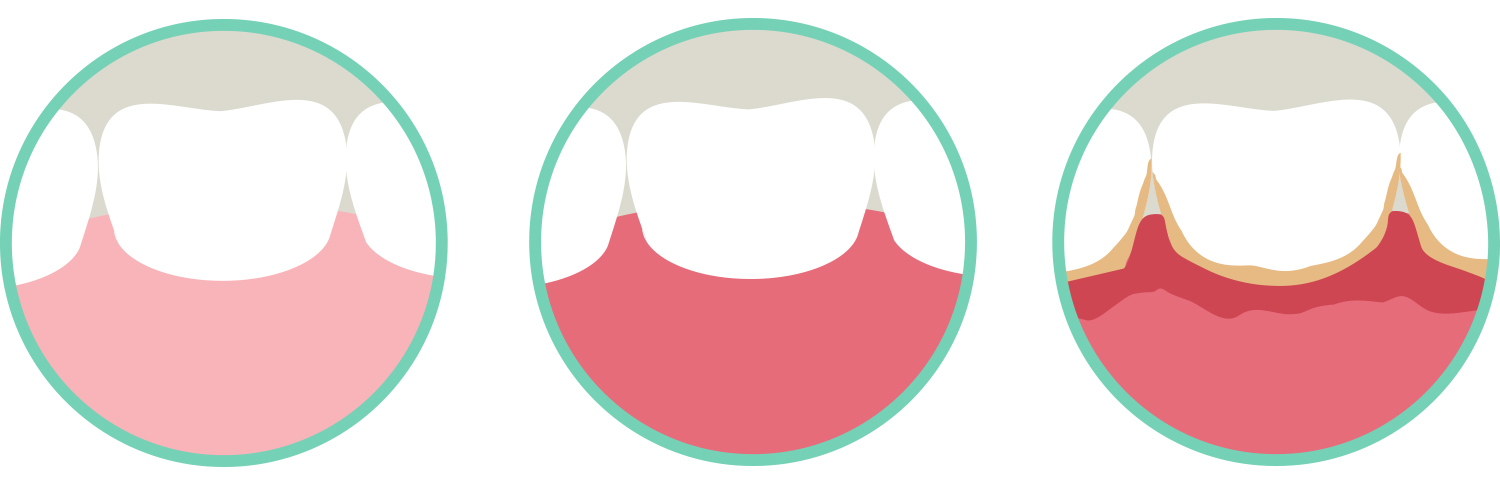Three out of four adults will experience gum disease in their lifetime
Gum disease is common among adults, especially the elderly, diabetics, pregnant women, people taking certain medications, and smokers. Plaque builds up at the gum line, causing gum problems. Plaque is a type of bacteria that needs to be removed regularly or it will harden into tartar, which can only be removed by your dentist or dental hygienist. As gum disease is prevalent, it is imperative to recognize the early signs of gum disease before it progresses into periodontitis and ultimately leads to the destruction of bone and tooth loss.
Read more about BioGaia Prodentis
According to the World Health Organization (WHO), 60–80% of the population in industrialised countries suffer from gum disease, aka gingivitis (bleeding gums), and 10–20% suffer from periodontitis (tooth loss).
According to the World Health Organization (WHO), 60–80% of the population in industrialised countries suffer from gum disease, aka gingivitis (bleeding gums), and 10–20% suffer from periodontitis (tooth loss).
Almost all gum disease is caused by bacterial plaque
Plaque is the most common cause of gum disease. Several bacteria in plaque release substances that can cause local inflammation in the gum tissue as a result of irritation and toxicity. The disease is progressive, and the patient usually does not notice symptoms until the teeth are loose and ready to fall out. In most cases, gum disease cannot be detected by looking at the mouth alone.
Symptoms of gum problems
Healthy gums are pink, firm, and tightly fitted around each tooth. Symptoms of gum disease include red, sore, and bleeding gums, especially after brushing. Bad breath can also be a sign of gum problems. If you are unsure about your gum health, consult your dentist or hygienist.
Some signs of gum disease include:
- Bad breath or a bad taste in the mouth
- Teeth that seem to be loose or have shifted position
- Gum tissue that is red, swollen and/or bleeds easily (healthy tissue is pink, has an orange peel appearance and does not bleed)
- Pus between teeth and gums (healthy gums are tight around the tooth and do not bleed)

Bacterial balance
It is estimated that there are approximately 800 types of bacteria in the oral cavity and that there are more than one billion bacteria on each tooth. In normal conditions, these bacteria are in balance and protect you from illness, but when the balance is disrupted by inadequate oral hygiene, stress, or poor diet, plaque-forming bacteria can gain the upper hand, resulting in gum disease.
Our important bacteria
Gingivitis and periodontitis
More than half of the adult population suffers from gum inflammation (gingivitis). Plaque causes gingivitis, and the first signs are irritated, swollen, and bleeding gums. Gingivitis triggers an inflammatory process, and if the inflammation is not treated, it progresses deeper down in the gingival pockets and may lead to periodontitis. A third of all adults suffer from periodontitis, which is often chronic and may lead to tooth loss.
How periodontitis develops

Plaque. Healthy gums are pink, firm, and tightly fitted around each tooth. When brushing or flossing, they do not bleed. A bacterial film known as dental plaque is formed continuously on and between the teeth as well as at the gum line. Plaque consists of microorganisms, salivary proteins, food and beverage residue and can be formed in just one day. If you do not clean your teeth and gums regularly, plaque builds, and the gums become inflamed.
Gingivitis. Early signs of gingivitis include bleeding gums during brushing or flossing. Red and tender gums are indicative of inflamed gums, but they are often not painful, making them difficult to detect on your own. The inflammation leads to the formation of a pocket between the tooth and gum.
Periodontitis. If gingivitis is not treated in time, there is a risk that it will spread to the bone and ligaments that support the teeth. As a result, the gum pockets caused by inflammation become deeper, and bacteria penetrate further down and gradually attack the bone. Over time, the tooth loses more and more of its attachment. There is now a progression from gingivitis to periodontitis. In many cases, there are no apparent symptoms of progression because it happens slowly over several years. It is necessary to seek professional treatment for periodontitis to prevent the process from continuing and eventually leading to tooth loss.
Caries
Both caries and periodontitis originate from a disturbance in the balance and diversity of the biofilm. Contributing causes include poor oral hygiene, poor diet, stress and/or other factors that affect microflora. Caries are mainly caused by the presence of the bacterium mutans streptococci, which creates a low local pH environment which in turn de-mineralizes enamel.
Halitosis – Bad breath
Bad breath (halitosis) can occur from time to time or be more or less permanent, depending on the cause. Some of the common causes are poor oral hygiene, periodontal disease, respiratory tract infections or underlying illnesses like diabetes, kidney, liver or reflux disease.
